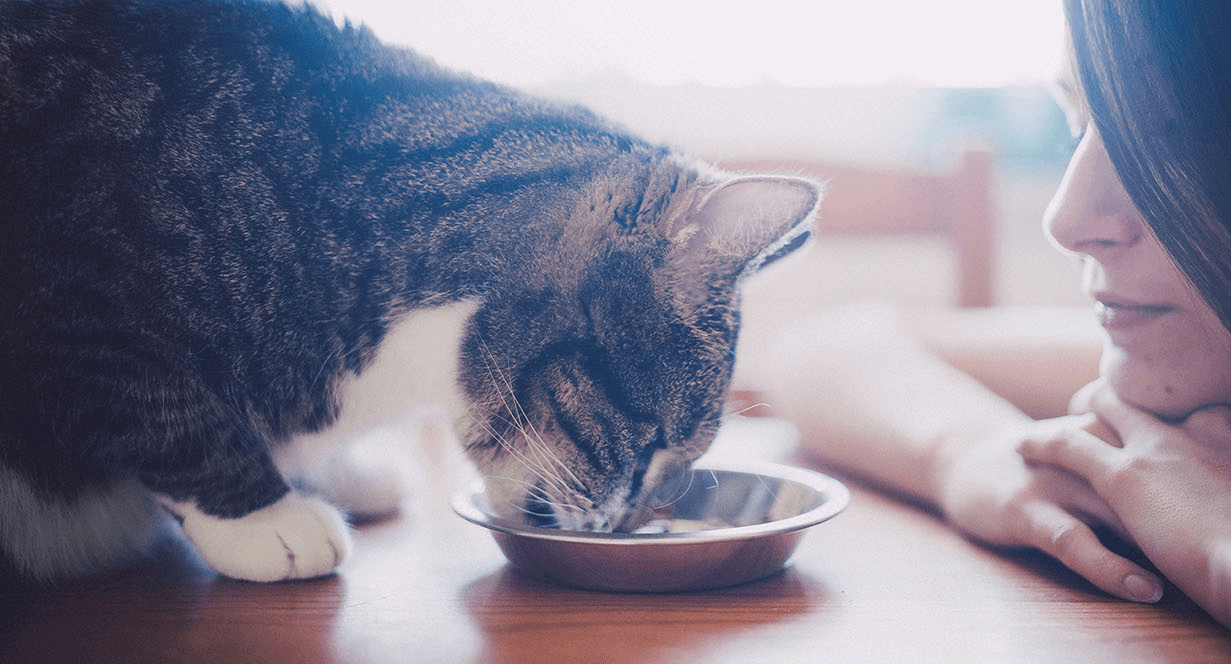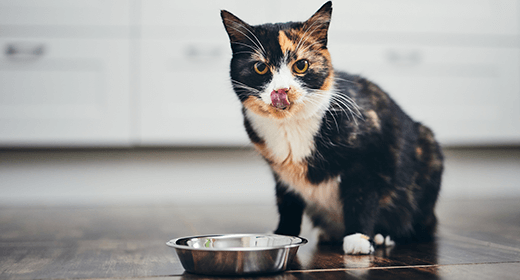

When you adopted your kitten, you couldn't dream of feeding her anything but food designed for her growing body. Now that she's nearly grown, it's time to start thinking about a premium formula specially made for adult cats.
Though she still plays like a kitten, your adolescent cat is quickly maturing into an adult, and contrary to what some would have you believe, one food (whether it's kitten food or adult food) doesn't fit all cats. The nutritional needs of kittens and cats are vastly different, and it's critical to give your pet premium nutrition that's age-appropriate.
Why move your nearly grown kitten to a premium adult cat food? Because quality counts. It's important to continue the superb nutrition she's been getting from a premium kitten food into adulthood. Downgrading to a basic nutrition brand at this stage of her life may upset her digestive system and certainly won't provide her with the same type of nutrition she was raised on.
Think of a baby. When it's time to start giving him solid food, you wouldn't feed your child anything less than the best nutrition you can buy. The same is true for your maturing kitten. Premium foods such as IAMS ® are formulated with high quality ingredients to help maintain overall health. They're specifically designed to provide your cat with a formula that features:
What do all of these features add up to? A happy, healthy cat. With premium cat food, you can expect to see these important indicators of good health. They contribute to providing your cat with a long, healthy life:
Founded upon decades of research, premium formulas from IAMS help maintain your cat's health and provide him with the nutrition he needs for a long life. Generic brands simply may not match the level of expertise that goes into every bag of IAMS Cat Food.
When your cat is about 12 months of age, it's time to change her diet to a premium maintenance formula. When you transition your cat to an adult diet, it's important to monitor her weight and body condition and adjust portions if necessary.
Because cats generally eat only what they need, free-choice feeding is adequate for most cats. (Free-choice makes food available to your cat around the clock and lets her eat when and how much she needs.) Indoor cats that don't get much exercise, however, may overeat if fed free-choice. For them, portion-controlled feeding is a better routine. We recommend to split the daily ration into at least two meals per day.
To determine how much food to give your cat, check the recommendations of the pet food manufacturer on the label. Use the guidelines and weigh your cat on a weekly basis. If your cat is gaining or losing weight and shouldn't be, slightly adjust her daily intake and weigh again the following week.
To avoid intestinal upsets, make the change from a kitten formula to an adult diet over a period of four days with the following method:
Day One: Fill your cat's dish with 75 percent kitten food and 25 percent adult food.
Day Two: Mix adult and kitten food in a 50/50 ratio.
Day Three: Feed your cat a mixture that's 75 percent adult food and 25 percent kitten food.
Day Four: Switch to 100 percent adult formula.


Cats are known for being a bit choosey about what they will and won’t do. And a little pickiness is fine when it comes to picking out toys and napping spots! But if your cat is or becomes extra-selective about what they’ll eat, it’s time to pay attention and perhaps talk to your vet. You and your vet know your cat best, so it’s always worth checking in if you think your cat isn’t eating enough and want their professional advice.
Start by paying close attention to what your cat is eating and how they behave. This information will help you, your household and your vet work together to make sure your cat is living and eating well.
Is your cat begging for table scraps or holding out on eating until you offer treats? Extras like these can be very disruptive to your cat’s appetite and diet. Think about them like snacks or desserts for you — tasty cravings that are easy to fill up on. A small portion may not seem like much, but it can make a big different for a cat-sized digestive system!
Try dialing back how much you treat your cat to tasty extras and see if their interest in the food bowl starts to return. Remember, it’s generally all right for cats to skip a few meals, but if they haven’t eaten for 24-36 hours it’s time to call the vet (even if they’ve continued drinking water).
Humans often crave variety in their meals, but for cats, routine is king. It’s not likely they’d avoid their regular food out of boredom with it, but if you’ve recently changed the kind of food, the number of feedings or the times you feed your cat, they may be avoiding eating as a response.
It's a good idea to change your cat’s diet gradually (unless your vet advises otherwise). Pickiness can often be resolved by helping your cat adjust and get comfortable with their updated diet!
If your cat starts eating less, you may want to look for factors that could be causing stress. Seemingly unrelated changes to their environment can shift your cat’s stress levels enough to impact their interest in food. Has another animal or person joined or left the household? Has your cat been adapting to new surroundings due to a move or renovation? As the stress of that change begins to subside, your cat will probably go back to a normal diet.
Talk to your vet about good ideas for reducing your cat’s stress levels and share any concerns you have about their diet then too. You’re both on the same team, so work together to help your cat feel better!